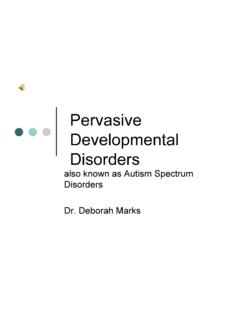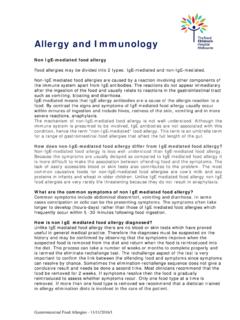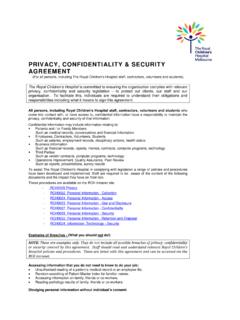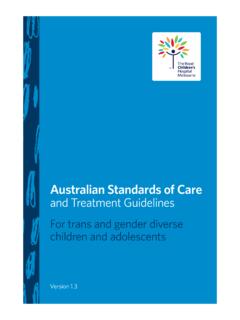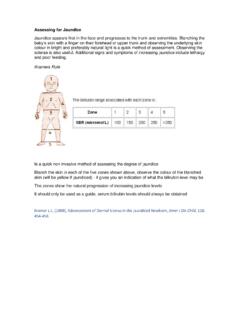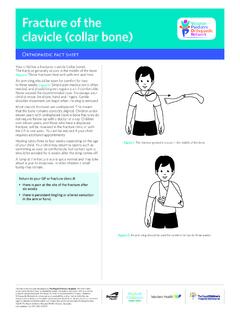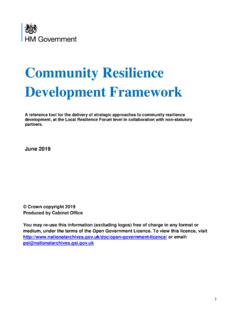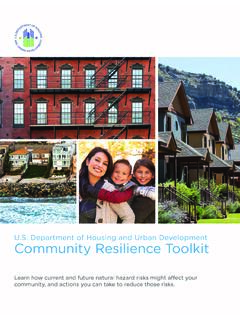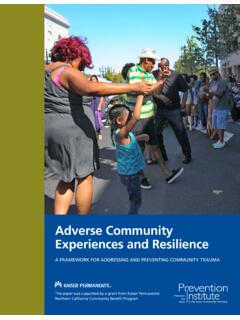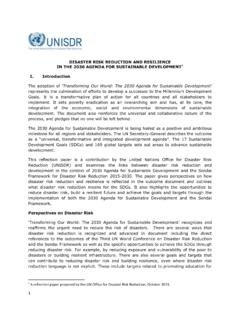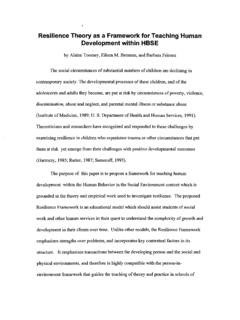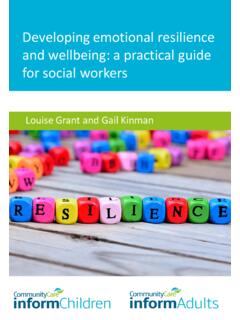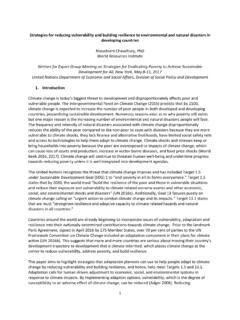Transcription of An integrated approach to early childhood development
1 An integrated approach toearly childhood developmentBackground PaperAbout The Benevolent SocietyThe Benevolent Society is Australia s oldest charity. Established in 1813 we have been caring for Australians and their communities for nearly 200 years. We are a secular, non-profit, independent organistation working to bring about positive social change in response to community needs. Our purpose is to create caring and inclusive communities and a just society. Prepared for The Benevolent SocietyPrepared by Centre for community Child Health, MelbourneWritten by Dr.
2 Tim Moore (Senior Research Fellow) and Alexandra Skinner (Project Officer)September 2010 ISBN 978-0-9807720-3-6 The Benevolent SocietyLevel 1,188 Oxford StreetPO Box 171 Paddington NSW 2010t 02 9339 8000f 02 9360 2319e PaperAn integrated approach to early childhood developmentSeptember 2010 ContentsExecutive Summary ..11. Introduction ..32. The big picture: climate change and social climate change ..43. Moving towards integrated service delivery: government policies and initiatives ..64. Service systems and government support: what works for children and families.
3 85. Building an integrated service system: what we can do ..126. Forms of collaboration and integration ..157. Existing models of service integration ..208. Improving service integration: what we have learned ..259. Priorities and recommendations ..2910. Conclusion ..3511. References ..36 Page1 Background PaperAn integrated approach to early childhood developmentSeptember 2010 Major social, demographic and economic changes in Australia over the last 50 years have dramatically altered the conditions in which families are raising children. There is evidence that a significant number of children are facing worsening developmental and social outcomes as a result of this social climate change.
4 The system of services for children and families is struggling to cope with families increasingly complex needs in the face of this rapid societal change. Services are fragmented, and the system is difficult for families to understand and access. The service system needs to be reconfigured to better meet families suggests that, while an integrated service system would not directly improve family functioning and children s wellbeing, it would contribute to those outcomes by improving access to services and enabling early identification of are four levels at which integration needs to occur:Government/policy integration is based on the recognition that the wellbeing of children is not the responsibility of any one department.
5 At this level, policy and planning are integrated across government portfolios, departments and agencies. Regional and local planning integration involves the establishment of an early years partnership group to drive local integration. Strategies include mapping community assets and needs; developing an integration plan; and simplifying parental access to services through single entry points. An important focus is the linking of specialist services with mainstream or universal delivery integration can take the form of virtual or co-located integration.
6 Different forms of service level integration fall along a five-point continuum ranging from coexistence (where services operate independently) to full integration (where services merge completely to form a new entity).Teamwork integration requires professionals to work in teams with members of different disciplines. Types of team integration range from unidisciplinary teamwork (where one discipline attempts to meet all the needs of families) to transdisciplinary teamwork (where team members share roles and cross discipline boundaries).Two of the most notable efforts to integrate child and family services are Sure Start in the UK and Toronto First Duty in Canada.
7 Both models bring together a range of services in one centre, including early education and care, parenting support, child and family health services, and help with employment. Evaluations of both models have found benefits for children and is recognition in Australia of the need for an integrated child and family support system. Over recent years there has been an unprecedented level of collaboration between federal and state governments in developing policies and frameworks for early childhood services. While a comprehensive, integrated child and family support system has yet to be developed, there are some promising a national level, The Department of Families, Housing, community Services and Indigenous Affairs established its Communities for Children (C4C) initiative to promote a local partnership approach Executive summaryBackground PaperAn integrated approach to early childhood developmentSeptember 2010 Page2to planning and delivering services.
8 Established in 45 sites, the program aims to improve children s health, safety and wellbeing in disadvantaged communities. A local non-government organisation (NGO) works with the community to identify needs and develop appropriate strategies. This NGO acts as a broker, engaging other local organisations to help deliver those strategies. The model aims to increase service coordination and a regional level, integration initiatives include Families NSW, a service coordination program established in 1998 which attempted to integrate planning at the government level.
9 However, subsequent changes to the program have reduced its effectiveness as a comprehensive regional planning process. Also in NSW, the Schools as community Centres program runs 51 projects in partnership with families, communities and agencies. It runs supported playgroups and activities relating to early literacy and transition to Victoria, the Best Start program builds local partnerships between parents, services and government agencies to promote better service coordination and joint strategic planning. The Primary Care Partnerships initiative in Victoria aims to improve integration between services within the primary health care system.
10 International and Australian experiences of integration provide some evidence of the impact that integration has and how best to achieve it. Evidence of the impact of integration is somewhat limited. Research suggests that it is the quality, rather than type, of integration that matters for improving outcomes. integrated working only benefits families if it results in higher quality is more evidence about the process of integration, which confirms that it is a challenging process requiring commitment, enthusiasm and careful planning. Research highlights a number of barriers to, and factors that promote, successful collaboration.
